The land of 10,000 lakes is home to over 44,926 miles (72,301 km) of shoreline, so it makes perfect sense that Minnesota’s national park sites are all about lakes and rivers. From the canoeist’s paradise of Voyageurs National Park to the urban sanctuary of the Mississippi National River & Recreation Area, the national parks of Minnesota provide endless opportunities to discover, learn and explore pristine waterways.
Minnesota’s National Park sites are bustling in the summer months with visitors. Lengthy trails zig-zag across the state, providing ample opportunity for hiking, biking, birdwatching, or simply enjoying a picnic lunch in nature. A beautiful blanket of snow in winter covers these once lush forests and waterways, creating opportunities for cross-country skiing, snowshoeing and ice fishing.
If you’re ready to discover Minnesota’s expansive lakes, intimate creeks, thundering falls, and playful wildlife, there’s no better place than at one of the National Parks of Minnesota. Below we discover the finer details of well-known National Park Sites like Voyageurs National Park and Saint Croix National Scenic Riverway to the hidden gems of Pipestone National Monument and Grand Portage National Monument. As it’s my home state, I can say that there’s no place in the world quite like Minnesota. Here’s why.
Contents
National Parks In Minnesota
1- Voyageurs National Park
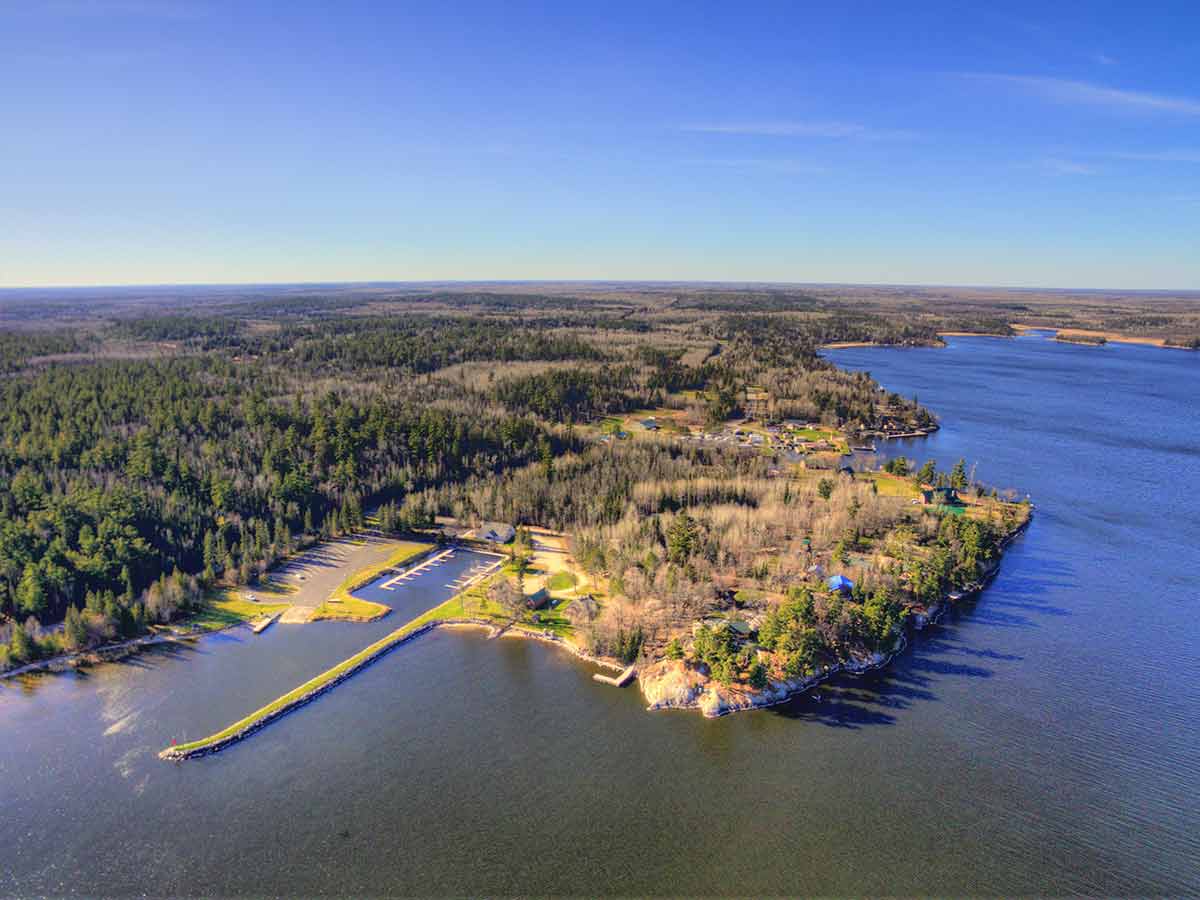
It doesn’t get more classic Minnesota than Voyageurs National Park.
Located at the very top of Minnesota and only reachable by boat, the park is heaven on earth for canoeists and freshwater enthusiasts.
30 lakes and over 900 islands make up the bulk of Voyageurs National Park’s 218,054 acres (88,243 ha), and with limited roads within the park, the best way to explore the waterways is by canoe.
Spend an afternoon or a few days in Voyageurs, and you’re sure to come out with marvellous stories of wildlife, rivers, and some of the friendliest rangers in the nation.
Things To Do In Voyageurs National Park
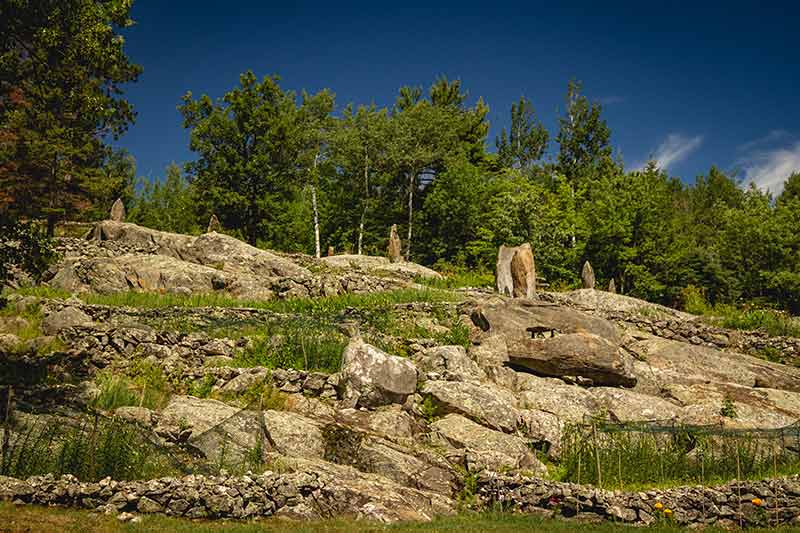
- Explore Voyageurs National Park By Canoe
The best way to see Voyageurs National Park’s beauty is to glide through the park by canoe and all the visitor centres rent canoes or are happy to point you in the right direction.
For an even grander adventure, you can pack your tent and camping supplies and spend multiple days paddling from campsite to campsite.
- Go Hiking
Exploring Voyageurs National Park by foot is an entirely different experience than by canoe.
Forests are abundant with spruce, fir, oaks, maple, and pine trees, wildflowers colour the forest floor, and if you’re feeling peckish, chances are high you’ll find blueberries, raspberries, and strawberries to snack on.
Hikes range from challenging to easy, with options for 30-minute strolls to multi-day adventures.
- See The Northern Lights
Seeing Voyageurs during daylight is only half the experience and if you make the long trek to the park, be sure to stay the night.
With no light pollution, the sky is a sight to behold every clear night, and the Northern Lights will put on a remarkable show if you’re lucky.
Winter and fall provide your greatest chances, but it is possible to experience the Northern Lights any time of the year.
- Spot Wildlife
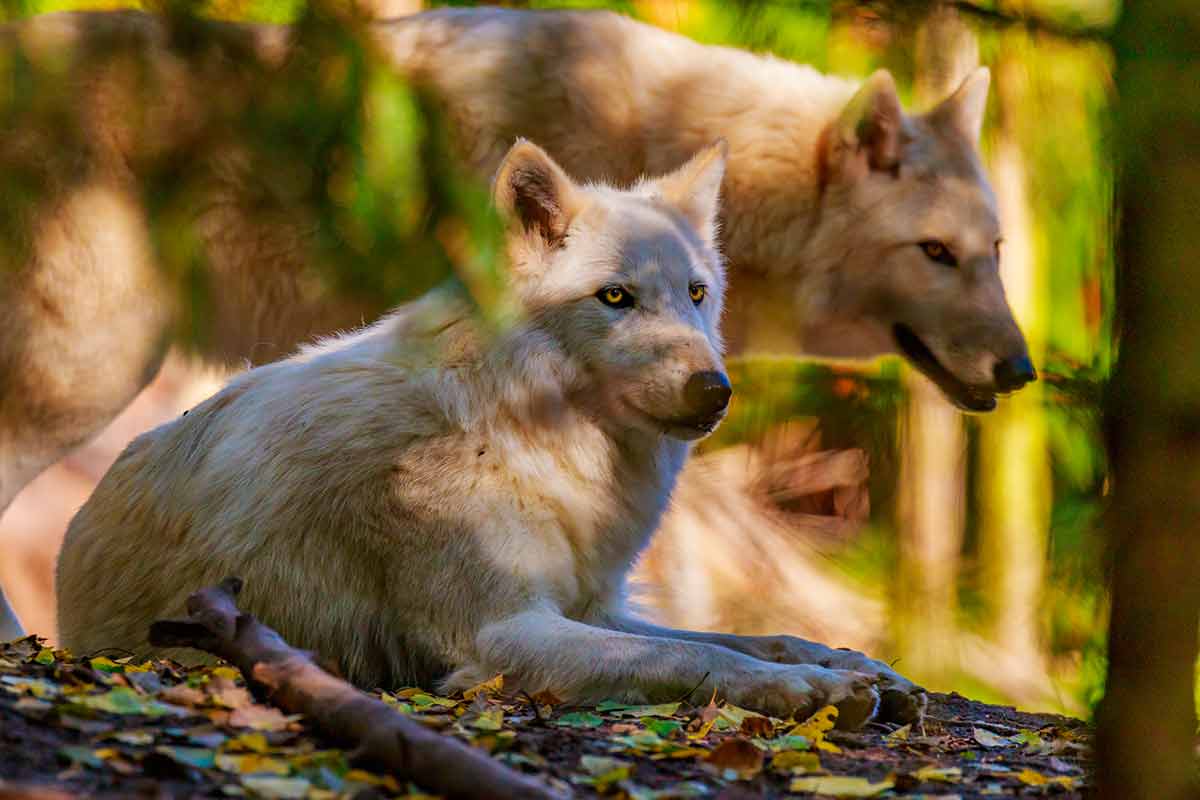
Moose, wolves, black bears, bald eagles, loons, beavers, and owls all call Voyageurs National Park home, and spotting these remarkable animals is as simple as keeping an eye on your surroundings.
Gold Portage is one of the best places to spot wildlife, especially the half-mile (0.8 km) trail connecting Rainy Lake with Kabetogama Lake.
Although no matter where you are in the park, chances are high, that you’ll be greeted with loon calls echoing off the water and bald eagles soaring overhead.
Winter Activities In Voyageurs National Park
Once winter settles in, Voyageurs National Park becomes a snowy wonderland where lush forests turn into frosted landscapes and exploring the park is an entirely new experience.
If you want to get your heart rate up, have a go on the many cross-country skiing and snowshoeing trails. Or, for a less strenuous activity, hit the snowmobile trails or try your luck ice fishing.
How To Get To Voyageurs National Park
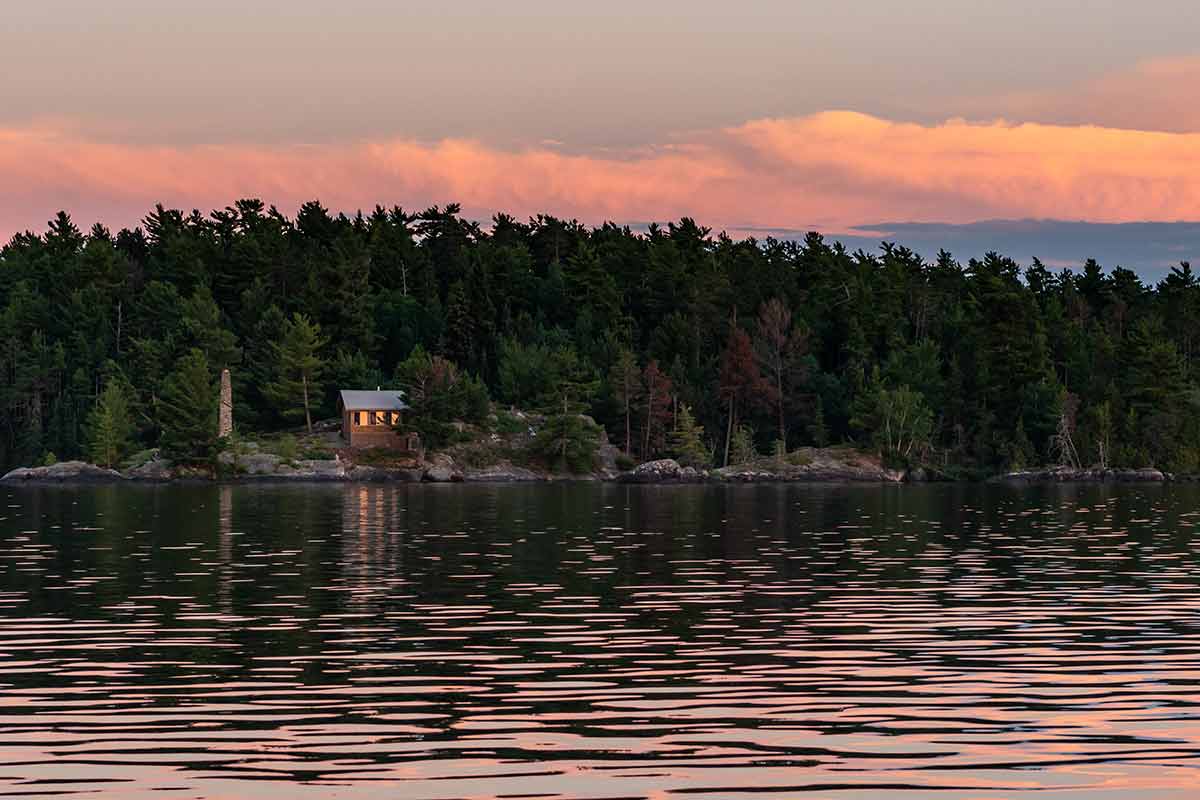
If you’re from out of state, the easiest way to get to Voyageurs National Park is to fly into Minneapolis-Saint Paul International Airport (MSP), rent a car, and drive 4.5-hours north to Rainy Lake Visitor Center.
Here you can rent a boat to enter the park. To avoid the lengthy drive, you can also fly into International Falls or Duluth airports, but be sure to book early, as finding a reasonable flight last minute comes with its challenges and price tag.
Rainy Lake Visitor Center is at 1797 Township Rd 342, International Falls, MN 56649.
Also read:
- 21 Landmarks In Minnesota
- 5 National Parks In Minnesota
2- Grand Portage National Monument
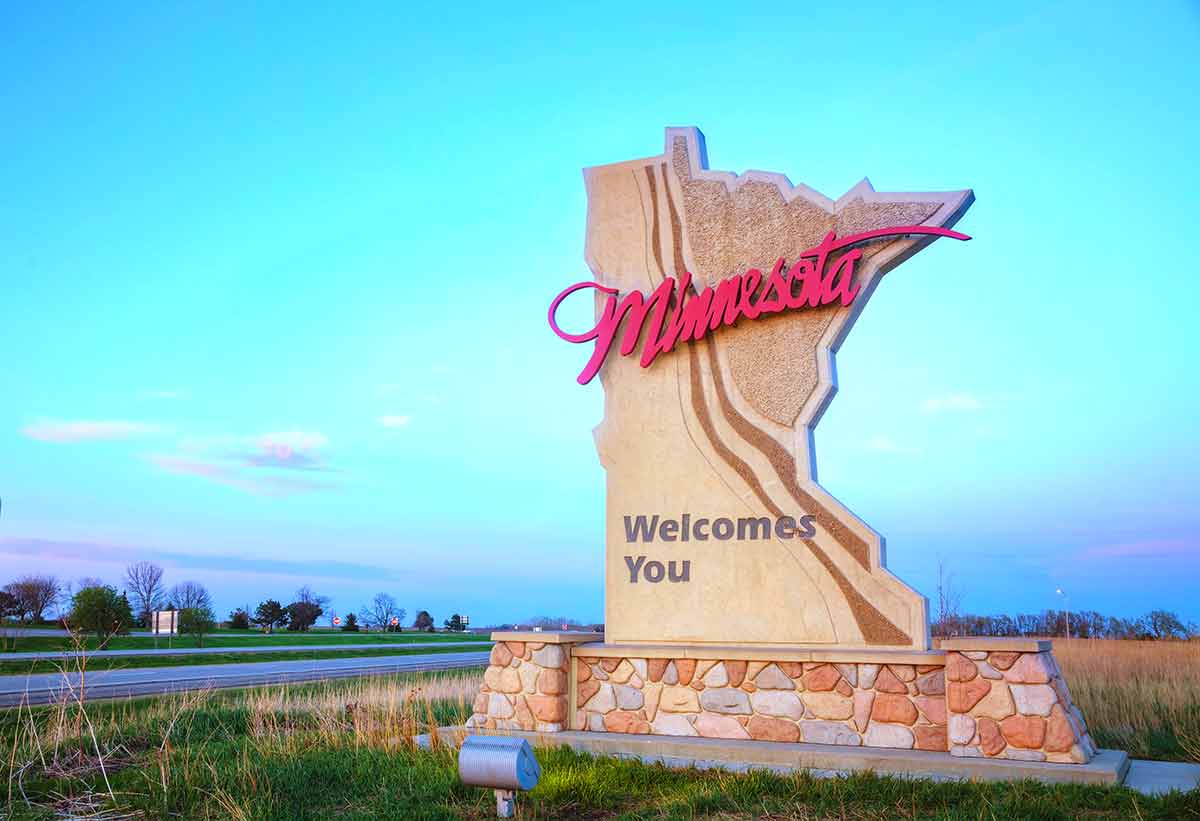
You’ll find Grand Portage National Monument, a stone’s throw from Canada on the northeastern tip of Minnesota.
Known for its historical past as an important fur-trading route, you can hike 1,000-year-old trails, learn about the Anishinaabeg Ojibwe culture, and admire astonishing views of the monument’s semi-wilderness.
Grand Portage National Monument sits on 710 acres (287 ha) of protected land, with the Grand Portage footpath and Pigeon River the main attractions.
Things To Do In Grand Portage National Monument
-
Visit The Heritage Center
No trip to Grand Portage National Monument is complete without a visit to the Heritage Center, where the National Park Service has done an impressive job of stopping time in its tracks.
Here you can visit the Heritage Museum, which features displays about the fur trade and Anishinaabe culture, watch films about the Ojibwe history and wander the reconstructed depot.
-
Complete The Mount Rose Loop Trail
A perfect activity for those short on time, the Mount Rose Loop Trail is just less than a mile (1.4 km) round trip yet rewards you with spectacular views over the Grand Portage, Mount Josephine and the depot.
The trail is now split between the old and the new trails, with the old trail slightly longer and steeper.
-
Hike The 1,000-Year-Old Portage Trail Along Gichi Onigaming
To experience Grand Portage National Monument to its fullest, pack some snacks and lots of water and head out on the Portage Trail.
The trail stretches 8.5 miles (13.7 km) from the stockade on Lake Superior to Fort Charlotte, but it’s also possible to hike smaller sections of the trail starting at Old Highway 61.
For the complete experience, camp overnight at Fort Charlotte before returning to Lake Superior (permits required).
How To Get To Grand Portage National Monument
The quickest way to get to Grand Portage National Monument is to fly into Minneapolis-Saint Paul International Airport and then get a connecting flight to Duluth, MN or Thunder Bay, Ontario.
You’ll need your own vehicle from either Duluth or Thunder Bay, and you can expect a 2.5-hour drive to Grand Portage from Duluth or a one-hour drive from Thunder Bay.
Grand Portage National Monument is at 170 Mile Creek Rd, Grand Portage, MN 55605
3- Pipestone National Monument
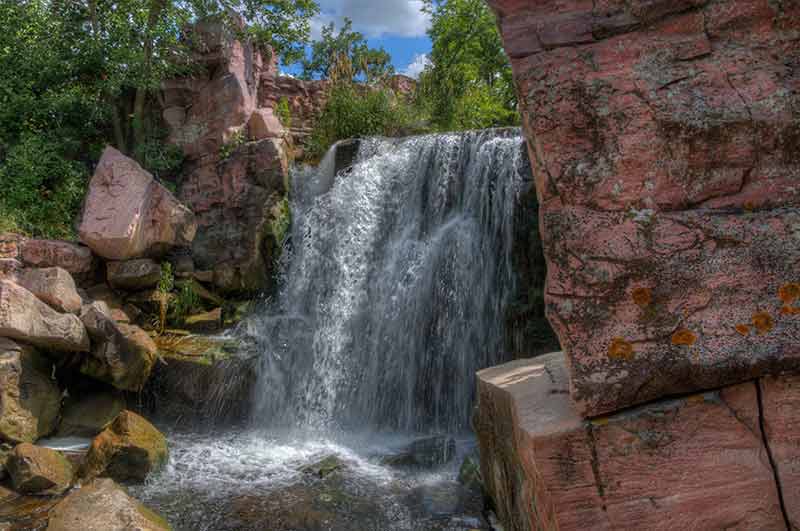
The smallest of Minnesota’s National Park sites, Pipestone National Monument sits on 282 acres (114 hectares) of protected land and is packed with a history dating back at least 3,000 years.
Here you can see up-close sacred quarries used by the Dakota, Lakota, and other Native American tribes.
Its famous red pipestone was used to craft pipe bowls and effigies and is still quarried today by special permit.
Things To Do In Pipestone National Monument
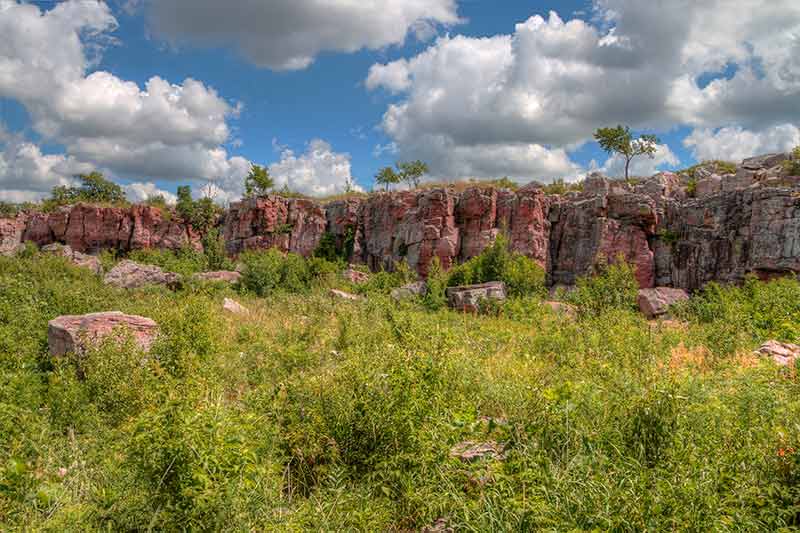
Many of Pipestone National Monument’s activities centre around its impressive red pipestone quarries.
In the visitor centre, you can learn about the region’s history in the museum, watch an informative orientation film, and if you time your visit right, even watch pipestone carving demonstrations.
Pipestone National Monument also features a ¾ mile (1.2 kilometres) Circle Trail, which takes you past quartzite rock formations, the Winnewissa Falls, tall grass prairie and historical markers.
How To Get To Pipestone National Monument
Pipestone National Monument is on the north side of Pipestone in the southwest corner of Minnesota.
Minneapolis-Saint Paul International Airport is approximately 3.5 hours away on US-212. Once you’re near Pipestone, take U.S. Hwy 75 until you see signs pointing to Pipestone National Monument.
Pipestone National Monument is at 36 Reservation Ave, Pipestone, MN 56164
4- Mississippi National River & Recreation Area
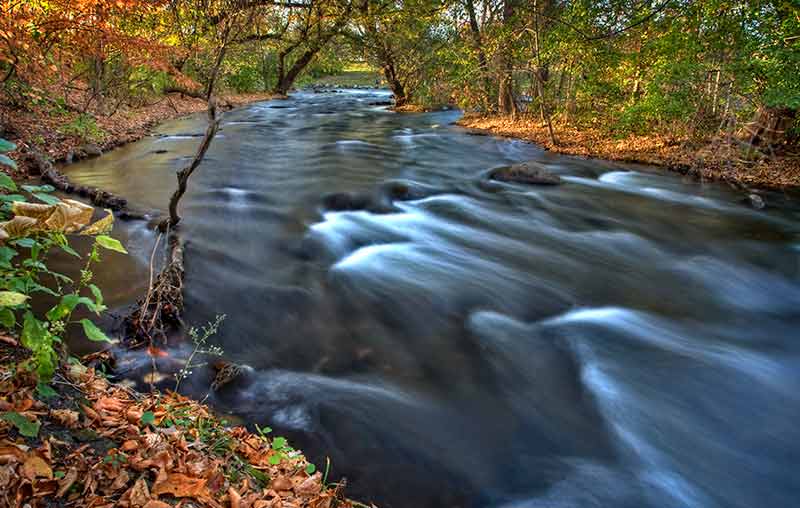
Mississippi National River & Recreation Area is a slice of paradise that winds its way through Minneapolis and St Paul.
It provides locals and visitors with an abundance of green areas to enjoy.
A visitor centre just off the Science Museum of Minnesota lobby is also a main feature of the Mississippi National River & Recreation Area.
It offers everything from interactive exhibits and Junior Ranger programs to reading nooks and information about other parks within the National Park system.
Things To Do In The Mississippi National River & Recreation Area
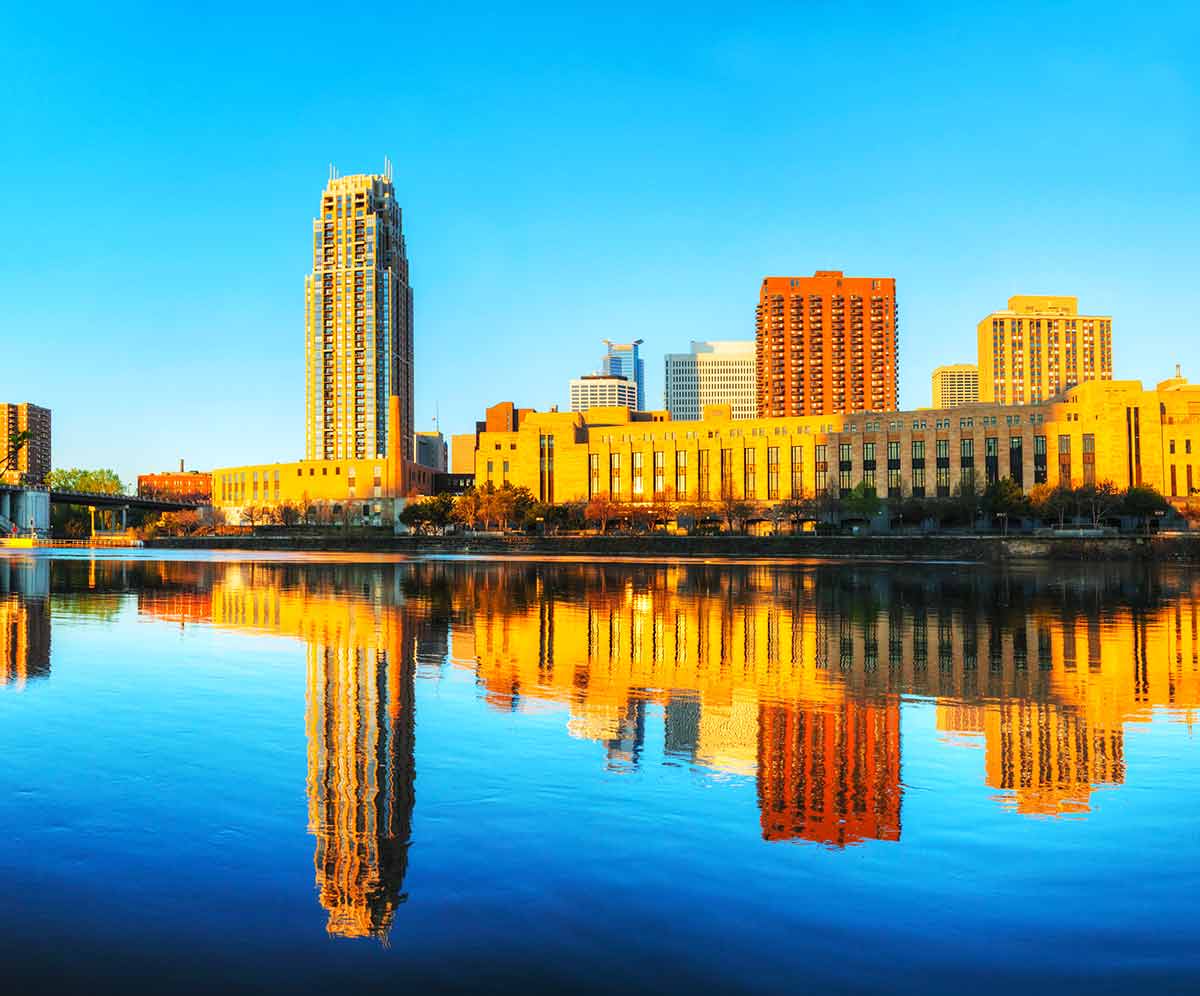
Stretching 72 miles (115 kilometres) along the Mississippi River, it shouldn’t be surprising that most things to do in the Mississippi National River & Recreation Area are based in or near the water.
Enjoy its lush banks and peaceful waters by canoe, fishing trips, birdwatching, hiking or bicycling.
Besides the must-visit Mississippi River Visitor Center, the Upper St. Anthony Falls Lock Visitor Center is also a popular spot where rangers lead short walks that explore incredible views of the Upper St. Anthony Lock and Dam.
The Winchell Trail is a popular choice if you’re looking to stretch your legs on a long hike. Expect a five-mile (8 km) moderate hike, which brings you along the bank of the Mississippi River and through an oak savanna restoration forest.
Other shorter hikes in the region include Pine Bend Bluffs, Grey Cloud Dunes, and Coldwater Spring, showcasing a mix of gentle creeks, restoration forests, dunes and prairies.
How To Get To The Mississippi National River & Recreation Area
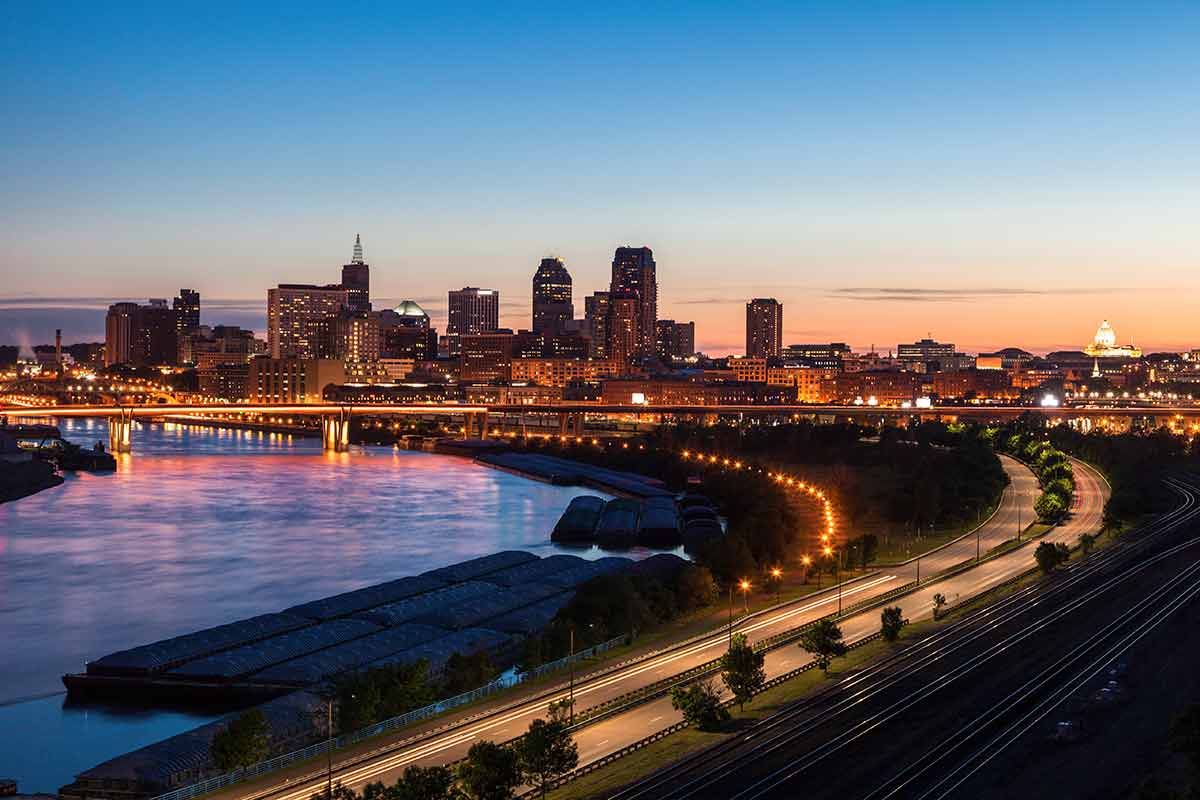
The best starting point to explore the Mississippi National River & Recreation Area is the Mississippi River Visitor Center, located in downtown St. Paul.
The Visitor Center shares a lobby with the Science Museum of Minnesota, just off 35E. Street parking is limited, so using the Science Museum of Minnesota parking ramp is recommended if you’re driving.
Mississippi National River & Recreation Area is at 120 W. Kellogg Blvd. Saint Paul, MN 55101
5- Saint Croix National Scenic Riverway
If you’ve noticed a common theme, Minnesota is all about the river and lakes, and Saint Croix National Scenic Riverway is no exception.
While the Riverway includes over 250 miles (402 km) of the St. Croix and Namekagon Rivers, only the St. Croix River is in Minnesota, so we have to tip our hats to Wisconsin here as well.
Things To Do In Saint Croix National Scenic Riverway
The best way to experience the Saint Croix National Scenic Riverway is by canoe or kayak.
With a blend of gently flowing waters and more challenging rapids, plenty of spots to start and finish, and numerous scenic campsites on the way, paddlers of all experience and fitness levels can enjoy the scenery.
If you prefer a less strenuous activity, the Saint Croix River is also a popular fishing spot, with an abundance of smallmouth bass, walleye, northern pike and catfish.
No matter what you get up to, keep an eye out for eagles, kingfishers, foxes, raccoons and even bears enjoying the protected riverway.
How To Get To The Saint Croix National Scenic Riverway
To get to the Saint Croix National Scenic Riverway Visitor Center, you’ll have to travel to the Wisconsin town of St Croix Falls, just over the border from Minnesota.
The small town is a short one-hour drive from Minneapolis and has plenty of amenities to cater to travellers.
You can also enter the Riverway from numerous points along the river if you have a canoe or kayak.
The St. Croix National Riverway Visitor Center is at 401 N Hamilton St, St Croix Falls, WI 54024.
If you love exploring national parks, you might like to read:
- Wyoming National Parks Guide
- Nevada National Parks Guide
- Michigan National Parks Guide
- 5 Maine National Parks
- New Hampshire National Parks Guide
- 25 National Parks in Canada
- 17 National Parks in Argentina
- Tasmania National Parks
- 20 National Parks in Mexico
- 18 New Mexico National Parks
- 18 National Parks in Massachusetts
- 17 Colorado National Parks
- 4 Indiana National Parks
- 5 Nebraska National Parks
- 30 Virginia National Parks
- 9 New Jersey National Parks
- 8 National Parks in Arkansas
- 8 Alaska National Parks
- 13 Tennessee National Parks
- 6 National Parks in Louisiana
- 5 Illinois National Parks
- 7 National Parks in Oklahoma
- 7 National Parks in South Dakota
- 12 Alabama National Parks
- 5 North Dakota National Parks
- 8 National Parks in West Virginia
- 20 National Parks in Arizona
- 11 National Parks In Florida
- 8 Hawaii National Parks
- 6 National Parks In Idaho
- Texas National Parks Guide
- 9 California National Parks
- 11 National Parks In Georgia
- 7 National Parks In Missouri
- 5 National Parks in Minnesota
- 7 National Parks In Kentucky
- 8 National Parks In Montana
- 15 National Parks In Washington State
- 8 South Carolina National Parks
- 12 North Carolina National Parks
- 4 Wisconsin National Parks
- 20 National Parks In India
- 11 Oregon National Parks
- 5 Connecticut National Parks
- 27 National Parks In New York State
- 4 Iowa National Parks
- Yosemite National Park
- Zion National Park
- 21 National Parks in Pennsylvania
- 9 National Parks in Mississippi
- 5 National Parks in Rhode Island
- 9 National Parks in Taiwan
- 20 East Coast National Parks
- Guide To Winter in Yellowstone National Park
Plan Your Trip

Rent A Car – Find the best car rental rates at Discover Cars. They compare car hire companies to provide you with the best deal right now.

Find A Hotel – If you’re curious about this article and are looking for somewhere to stay, take a look at these amazing hotels.





